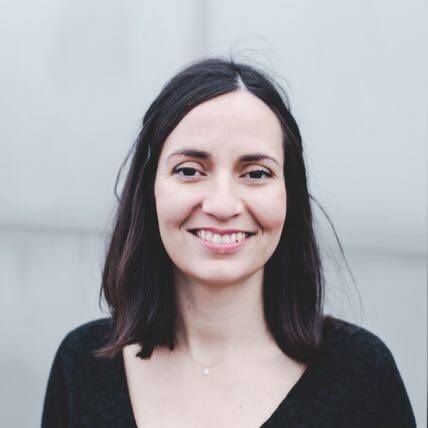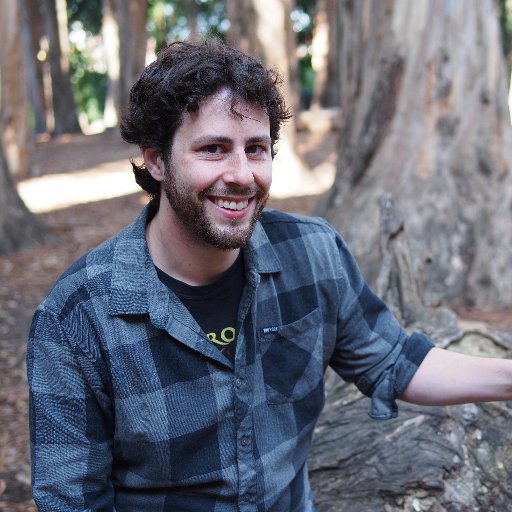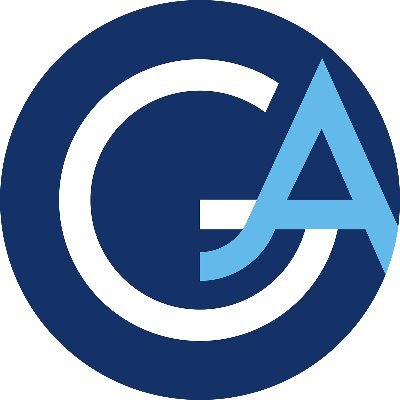
Emilie Mace
@EmilieMaceLab
Followers
1K
Following
2K
Media
18
Statuses
326
Neuroscientist and brain imager. Professor at @yourUMG @MBExC_de. Previously Max Planck Research Group Leader at @MPIforBI
Göttingen, Germany
Joined September 2019
Thrilled to share that our work is now published in @ScienceMagazine!✨ We found a preference for visual objects in the mouse spatial navigation system where they dynamically refine head-direction coding. In short, objects boost our inner compass!🧭 https://t.co/PEo1i9BQfB 🧵1/
9
34
159
New story: a protein engineering campaign to generate ambient light opsins. Engineering opsins has been limited by experimental throughput. We put an autopatcher on stilts, cut out the bottom, and made a custom lightpath to screen the response surface of over 1,500 opsins.
2
5
45
Excited to share our new work on the large-scale organization of the tree shrew visual system, led by @FrankLanfranchi with @joe_wekselblatt & Daniel Wagenaar! We trace the evolutionary roots of the primate ventral visual pathway—revealing surprises like face cells in a
The primate visual system is a marvel of nature, inspiring the convnet. But how did it evolve? Do all highly visual mammals possess a ‘ventral stream’—a hierarchy of brain areas with increasing selectivity for complex forms? In our new study, we tackled these questions using
3
29
169
The primate visual system is a marvel of nature, inspiring the convnet. But how did it evolve? Do all highly visual mammals possess a ‘ventral stream’—a hierarchy of brain areas with increasing selectivity for complex forms? In our new study, we tackled these questions using
2
33
153
We currently have open positions for PhDs and Postdocs! Interested in learning fUS: please apply! 🧠 https://t.co/fqz4d80HrY end/
0
1
5
In summary, visual objects refine population-level head-direction coding in PoSub, potentially helping the brain’s internal compass anchor to external cues. Whether this extends to other types of spatially tuned neurons remains an exciting open question! 8/ Image: D. Laurence
1
0
5
To test if this effect was specific to objects, we presented two landmarks to the mouse: an object picture or a scrambled version. The boost occurred only with the object! 7/
1
0
5
At the population level, head-direction cells form a ring attractor. Cells aligned with an object’s direction were boosted, while others were inhibited—showing that objects refine the brain’s internal compass.⚡🧭 A model confirmed that this effect is plausible! 6/
1
0
5
We then asked: How are visual signals integrated with spatial ones? We teamed up with @apeyrache. Mice were recorded in PoSub while exploring an arena with a landmark, then head-fixed for visual stimulation. Both head-direction and fast-spiking cells preferred objects! 5/
1
0
6
To our surprise, spatial navigation areas—not visual cortex—responded strongest to objects! We replicated this in awake and anesthetized mice and confirmed it with electrophysiology. Postsubiculum (PoSub), a hub of the head-direction system, was the top hit! 🎯 4/
1
0
7
This project began with a paradox: Mice can see objects, yet no dedicated object areas like those in primates had been found. Inspired by early human fMRI studies, we used an unbiased functional ultrasound (fUS) screen to look beyond the visual cortex. 3/
1
0
7
This was a true team effort, led by the brilliant Domique Siegenthaler, in collaboration with Stuart Trenholm and @apeyrache ! 🙌 2/
1
0
5
Finally it's out! https://t.co/ZfPTLWFRDO Thanks to Felix Baier, Karl Farrow and Hopi Hoekstra! And a big thank you to all the co-authors, reviewers, host institutes and funding sources! @BramNuttin, Arnau Sans Dublanc, Chen Liu, Victoria Tong, Julie Murmann and Keimpe Wierda
nature.com
Nature - Visual threat triggers contrasting freeze and escape defensive responses in two species of deer mice as a result of different activation thresholds downstream of the superior colliculus in...
How flexible are essential innate behaviours and their underlying neural circuits? @Felix_Baier and I, with @HoekstraLab and @FarrowLab, addressed this question by studying the #evolution of threat avoidance in sister-species of Peromyscus mice.
5
16
59
Now out in #NatureNeuroscience: new paper from our lab — "Temporal control of progenitor competence shapes maturation in GABAergic neuron development in mice." Congrats to first authors Ann Bright, Yana Kotlyarenko, Florian Neuhaus! https://t.co/kBapSwIMgk
nature.com
Nature Neuroscience - Unlike cortical progenitors, ventral telencephalic progenitors retain the ability to generate diverse neuron types during neurogenesis. Here, the authors show that ventral...
2
15
49
🚀New from Urban Lab in #eNeuro
@SfNJournals We used spatiotemporal clustering of single fUS voxels to map visual activity in awake mice. This high-resolution method precisely separates signals, revealing fine-grained activity patterns like never before
1
3
10
We have a new PhD position available. Please spread the word and retweet. The project will combine retina recordings, computational modeling, and optogenetics to help further develop vision restoration therapy. See here for more information: https://t.co/FnP2JTsHay
0
18
29
The lab has an open PhD position, to start as soon as possible. Very exciting opportunity to apply/learn miniscope imaging techniques to understand the role of hypothalamic circuits in learning and memory. Please share widely! https://t.co/dpAUJn54r7
#neuroscience #neurojobs
0
14
26
Have you ever wondered how memories are processed downstream of the #hippocampus and how this is affected by #Alzheimer's? We believe we may find some answers by riding all the way down the fornix to the mammillary body. Apply here for a #PhD with us: https://t.co/ilR7zId8Nu
1
28
104
Wir freuen uns mit @yourUMG und @moser_tmoser über die Bewilligung eines neuen SFB. Ziel ist es, vorhandene Therapien für Patient*innen mit Sinnes- und Bewegungseinschränkungen zu verbessern und neue Behandlungsansätze zu finden. Mehr unter https://t.co/ihtCRr318z
@dfg_public
0
9
32












